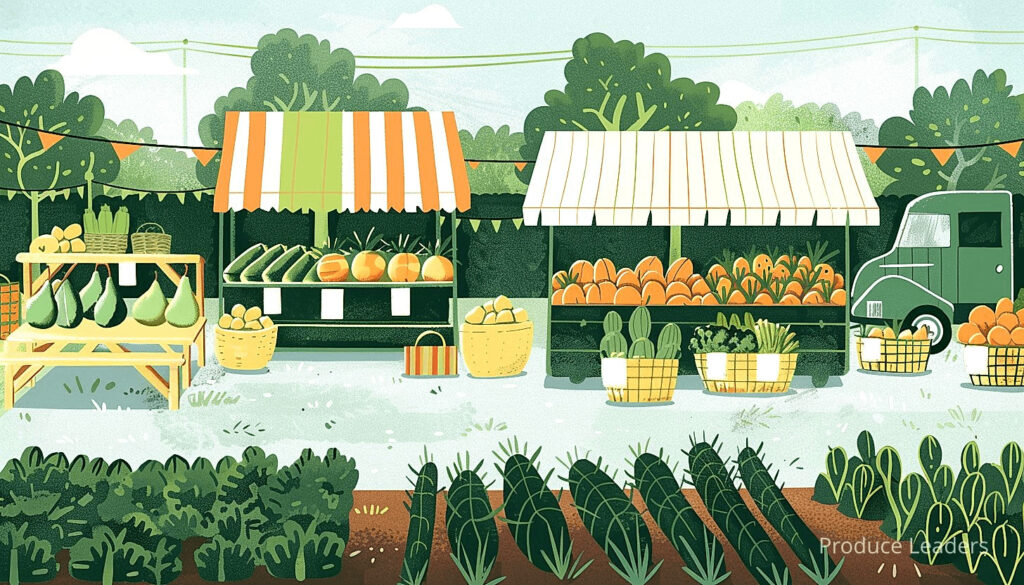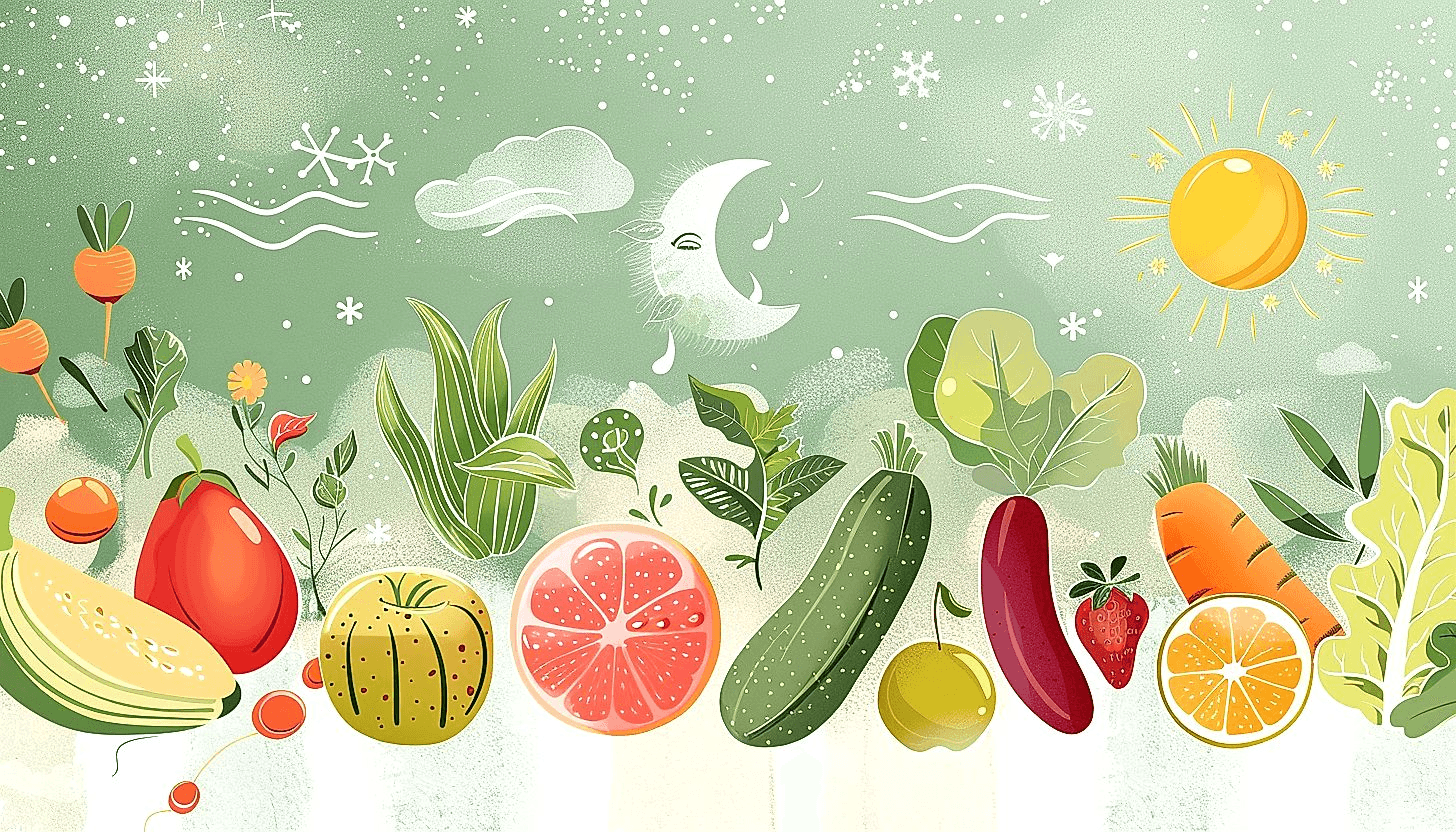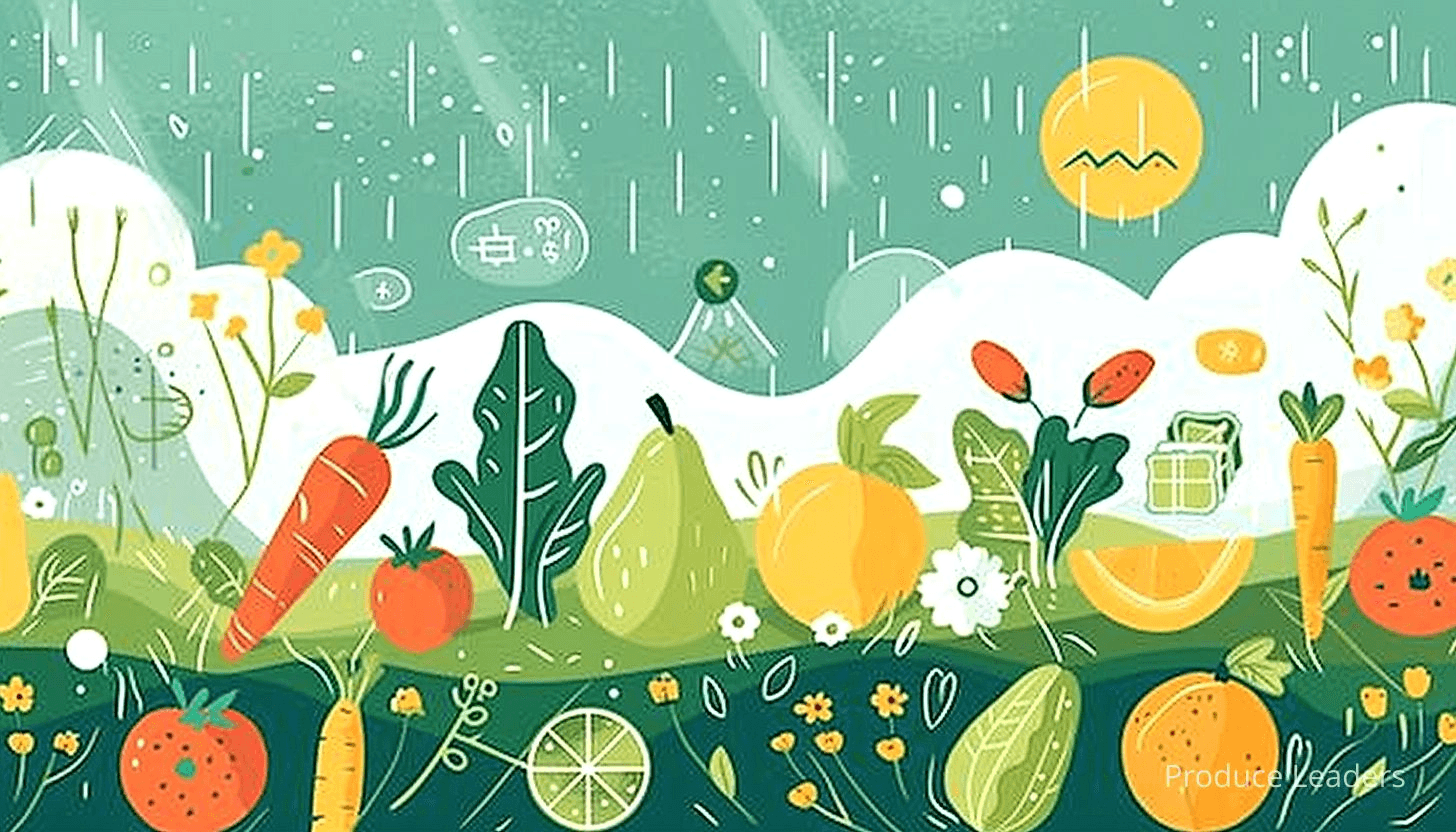Markets and supermarkets often experience differential pricing for the same produces during different seasons.
This fluctuation comes as a result of various factors inherent to each season.
It is not just a case of simple supply and demand or a mere coincidence.
Understanding these shifts can help both consumers and businesses make more informed decisions.
The following review dig ins into the dynamics of these fluctuations and their impacts.
Understanding these factors can lead to smarter purchase decisions, money-saving opportunities, and a better appreciation of what goes into getting that apple or ear of corn onto your kitchen table.
- Increased demand significantly drives up produce prices.
- Harsh weather conditions can lead to reduced crop yield.
- Shorter growth seasons result in increased scarcity.
- Labor shortages can cause a spike in costs.
- Transportation costs may rise seasonally, impacting prices.
As crucial as this overview is, it only scratches the surface of our discussion on seasonal fluctuations in produce prices.
While an understanding of these key factors is beneficial, it is equally important to examine other related matters, like market structure and foreign competition, which also play significant roles in shaping the price trends.
In the sections to follow, we will gain a clearer view of these dynamics and their interplay within the broader economic landscape. Let me tell you, stay with us if you want to gain a more comprehensive understanding of what determines the prices of your favorite fruits and vegetables.
It is our goal to provide you with actionable insights, and a broader understanding of the complex interplay of factors influencing the price of produce.
Ways Seasonal Fluctuations Affect Produce Prices
1. Increased Demand Drives Up Prices
In Short: Economic principles highlight that increased demand for a product, particularly for seasonal or off-season items, inflates prices due to consumers competing for limited supply. Price fluctuations are also driven by factors such as surging demand for organic produce and changing consumer preferences throughout the year.
Understanding the economic principle of supply and demand is key to pointing out why increased demand drives up prices in the produce sector.
When the demand for a product increases faster than its supply, the price usually goes up.
This happens because consumers are competing for a limited supply of goods so, they are willing to pay more for it.
It is essential to note that seasonal demand can have a significant impact on produce prices.
During particular times of the year, certain fruits and vegetables are in higher demand due to cultural, dietary or climatic factors.
In such periods, demand often exceeds supply, which followingly pushes prices upwards.
For instance, the cost of particular produce items can peak during major holidays, like Thanksgiving, if people are buying more of that type of produce for their holiday meals.
Beyond holidays, another big factor to consider is the desire of consumers for off-season fruits and vegetables.
Nowadays, it is common for shoppers to expect to find all types of produce in their local supermarket all year round.
Consequently, when off-season produce is in high demand, there might not be enough supply locally or nationally to meet this want.
Therefore, the prices of these items rise corresponding to the heightened demand.
To illustrate this concept further, here’s a list of produce items that often see price increases due to seasonal demand:
- Pumpkins and cranberries during fall due their association with Thanksgiving.
- Roses in February around Valentine’s Day for obvious reasons.
- Corn is in high demand during summer months for barbecuing and picnics.
Another underestimated factor is the increasing demand for organic produce.
Pro Tip: Understanding the economic principle of supply and demand is crucial; as it often results in increased prices in the produce sector due to factors like seasonal demand and increased demand for organic produce.
Despite its higher price tag, more and more consumers are gravitating towards organically grown fruits and vegetables. This increase in demand inherently influences its market price upwards.
The relationship between demand and price is undoubtedly a dynamic one, resulting in a constant fluctuation in prices throughout the year.
2. Harsh Weather Reduces Crop Yield
In Short: Harsh weather conditions, including drought, excessive rain, or extreme temperatures, significantly threaten crop yield, consequently driving up produce prices due to increased demand and farming costs. The impact varies significantly depending on the type of produce and specific weather conditions, underlining the intricate connection between seasonal weather fluctuations and the price and availability of our food.
When exploring the ways seasonal fluctuations affect produce prices, one of the key factors to consider is weather conditions and their impact on crop yield.
Harsh weather conditions pose a significant threat to agricultural productivity and can result in a significant reduction in crop yield.
Seasons characterized by extreme weather conditions such as prolonged periods of drought, heavy snowfall, or excessive rainfall, can greatly impede the growth and development of various crops.

The outcome is a reduction in yield, which in turn affects availability, leading to increased demand and consequently, price hikes.
In addition, the impact of severe weather events significantly increases the risk associated with farming, resulting in higher costs that often need to be passed on to consumers.
Such risks may include the cost of additional inputs required to address the effects of the weather, the cost of securing crop insurance, or the losses incurred due to reduced yield or spoiled crops.
We can further illustrate this through several key examples:
- During prolonged periods of drought, crop irrigation becomes a necessity. The additional cost for water and related irrigation equipment is invariably passed on to consumers through increased prices.
- Flood conditions can completely wipe out a crop. Replanting and the related costs might result in higher produce prices to cover these unforeseen expenses.
- Excessive cold or heat can damage crops or slow their growth, affecting yield and followingly, availability and price.
These examples demonstrate how extreme weather conditions, which are often synonymous with seasonal fluctuations in many parts of the world, can heavily impact produce prices.
The type of crop being grown also plays a role in how weather affects yield and prices.
For instance, fruits like oranges and strawberries are vulnerable to cold weather and can suffer significant damage from frost, whereas grains such as wheat and corn prefer cooler weather and can be affected by heat stress.
Thus, even within the broad category of ‘produce,’ the influence of weather on crop yield and prices can vary significantly depending on the type of produce and the specific weather conditions of the season.
This demonstrates the intricate relationship between seasonal weather fluctuations and produce prices – highlighting the key role that climate plays in determining both crop yield and the cost of our food.
3. Shorter growth seasons increase scarcity
In Short: Shorter growth seasons, largely due to changing weather patterns, lead to lower crop yields, increased scarcity, and subsequently higher market prices. Both consumers and farmers experience financial challenges as a result; consumers pay more for products while farmers face potential revenue loss.
The impacts of seasonal fluctuations on produce prices cannot be fully discussed without diving deep into the role of shorter growth seasons in increasing scarcity.
And yes, shortened growth seasons directly lead to a reduction in the availability of certain products, increasing the demand and followingly the prices of these products in the market.
Now, if you would ask, why do growth seasons shorten? The answer lies primarily with changing weather patterns that are, unfortunately, driven by climate change.
A slight shift in temperature or rainfall patterns can translate into a shortening or lengthening of the growth season, with severe implications for farming communities and produce markets.
Consider, for instance, an apple orchard. If the weather becomes colder sooner, apples have less time to grow and ripen. This decreases the overall yield of apples for the season, directly leading to scarcity in the apple market.
It is therefore quite evident that shorter growth seasons, driven by unpredictable weather patterns, can create a supply crunch, driving up the price of the produce affected.
The same logic applies to a wide range of farm products, including grains, vegetables, and even flowers. The impact is felt most acutely in the prices we pay for these products.
Here, let’s dig in a little into the various consequences of shorter growth seasons:
- Lower Yields: As explained with the apple orchard example, shorter growth seasons means less time for crops to grow and mature, resulting in lower yields.
- Increased Scarcity: Less yield translates into less availability of the product in the market, leading directly to increased scarcity.
- Increased Prices: As scarcity rises, and demand remains constant or increases, prices of affected produce inevitably increase.
We as consumers, needless to say, feel these effects the most. We find ourselves paying more for certain items, or sometimes, we may even find them completely unavailable!
It’s a problem that doesn’t only affect us as consumers though. Farmers too bear the brunt of it.
After all, farmers’ revenues are critically dependent on good harvests. Shorter growth periods, in turn, can have devastating effects on their revenue streams.
Furthermore, buying seeds, fertilizers and other essentials for growing produce becomes a cost-benefit analysis.
Farmers have to weigh the potential revenue from selling the harvested crops against the potential losses if the growth season shortens and the yield fall.
In the final analysis, shorter growth seasons due to seasonal fluctuations can significantly impact produce prices. Both consumers and farmers face real and tangible consequences.
4. Labor Shortages can Spike Costs
In Short: Labor shortages in agriculture significantly impact the cost of produce, causing price fluctuations and cash strain on the farming industry. Addressing this issue involves considerations of immigration policies and living wages, with potential solutions including investment in automation technologies.
The cost of produce is often closely tied to labor costs, making labor shortages a significant driver of price fluctuations. Labor shortages can cause a considerable strain on the economy of the agriculture industry, leading to an unexpected increase in the price of produce for the consumers.
Seasonal fluctuations in labor availability are a notable challenge for farmers. The agriculture industry relies heavily on seasonal labor, particularly during planting and harvest seasons.
When there is a lack of available workers during these crucial periods, farmers can be left struggling to plant or harvest their crops efficiently. The resulting inefficiencies often lead to reduced crop yield and higher costs associated with overtime pay or the need to hire additional resources at a premium price.

This is particularly true for labor-intensive crops like fruits and vegetables. Unlike grain crops that can be harvested using machines, fruits and vegetables require manual labor for harvest.
To further understand the impact of labor shortages on produce prices, it’s beneficial to dig in into some specific effects:
- Delayed Harvest: If crops are not harvested on time due to labor shortage, they may rot in the field, leading to a reduced supply and higher prices.
- Increased Labor Costs: When labor is scarce, farmers might have to increase wages to attract workers, which in turn, increases the cost of the produce.
- Increased Reliance on Imported Produce: Lack of sufficient labor could lead to more reliance on imported goods, which are often more expensive due to transport costs.
The impact of labor shortages does not stop at just increased prices. It can also lead to considerable food waste. Crops that are not harvested on time due to labor shortages may end up rotting in the fields, resulting in waste of not just the produce, but also the resources invested in growing them. This directly increases costs as growers may pass on the losses to consumers in the form of higher prices.
Recognizing the problem, many agricultural businesses are exploring automation as a potential solution. However, technology can only go so far in replacing human labor, especially for delicate tasks like picking fresh fruits and vegetables.
Furthermore, automation technology requires significant investments, which can also drive up the cost of produce, at least in the short-term. However, in the long run, technology could prove to be a cost-saving measure, potentially driving down the prices.
Therefore, addressing labor shortages in agriculture is no simple task. It involves taking into consideration various elements such as immigration policies, living wages, and rights of agricultural workers.
While finding a solution to this issue is a complicated challenge, the fact remains that labor shortages significantly spike the cost of produce. Understanding these factors and exploring ways to mitigate them will be key to ensuring steady and reasonable pricing for consumers.
5. Transportation Costs May Rise Seasonally
In Short: Seasonal variations significantly affect transportation costs in the produce industry, impacting the prices we pay for our fruits and vegetables. Factors such as weather conditions, rising demand, and logistical challenges cause these costs to fluctuate, which not only influence domestic pricing, but also extend to global trade, creating substantial economic effects at an industry level.
Seasonal variations play a significant role in the operations of any industry, and the produce industry is no exception. Transportation costs, a crucial element in determining the prices we pay for our produce, often shift with the seasons.
When demand arises due to a particular season, companies must spend more to transport goods, which in turn contributes to higher prices for consumers. Seasonal demand thus directly influences transportation costs, creating a ripple effect that touches every sector of the economy.
Fuel costs, a key component of transportation expenses, can also fluctify based on the time of year. For instance, there might be an increase in fuel costs during winter due to higher consumption rates, dramatically impacting the cost of transporting produce during this time.
As prices for raw materials such as gasoline and diesel rise, transportation costs inevitably follow suit. This rise inherently manifests itself as increased costs for moving produce from farms to markets, contributing to the final price consumers must pay.
Before diving further into this topic, let’s look at a few more ways seasonal shifts in transportation costs affect produce prices:
- Weather Conditions: Winter months often bring with them hazardous road conditions that can delay transportation of crops, driving up costs.
- Rising Demand: Periods of high demand, such as the holiday season, can pressure freight services, contributing to higher costs.
- Logistical Challenges: Seasonal variations provide logistical hurdles that need managing, which also increases costs.
These factors all feed back into the cost of our everyday items, subtly influencing prices in a way that’s not immediately obvious to consumers.
Additionally, seasonally increased transportation costs aren’t contained solely within national borders. They extend to the global produce trade too. A good example would be, importing fresh fruits and vegetables during winter months when domestic supplies are low would require a significant transportation expenditure, which would then be incorporated into the final price.
This worldwide interconnectedness adds another layer of complexity to understanding how transportation costs fluctuate seasonally, and how those changes influence the price of produce.
Finally, it’s crucial to note that while the impact of rising transportation costs on produce prices may seem minimal at the micro-level, at an industry level, these incremental cost increases can translate into substantial economic effects.
The seasonal variations in transportation costs, therefore, can’t be overlooked when analysing fluctuations in produce prices. It’s one of the many pieces of the puzzle that gives us a clearer picture of what we pay for our fruits and vegetables throughout the year.
Understanding this chain of cause and effect is essential to ensuring we can navigate and make sense of the ever-changing landscape of produce prices.
6. Floods or Droughts Impact Harvest
In Short: Natural disasters, such as floods and droughts, significantly disrupt agricultural production by damaging crops and infrastructure, leading to price fluctuations in the market. With climate change increasing the frequency and severity of such weather events, there is a growing need to develop strategies to manage and adapt to these challenges in order to maintain the stability of global food systems and economies.
When examining potential factors that cause fluctuations in produce prices, it’s impossible to overlook the influence of natural disasters, especially floods and droughts.
Historically, both floods and droughts have served as pivotal events significantly affecting crop yields and, by extension, retail prices in the market.
Depending on the timing and severity, both floods and droughts can lead to large-scale devastation of agricultural land, resulting in a sharp decrease in harvest volumes.

Such events can swiftly tip the balance between supply and demand – leading to a rise in prices as availability of fresh produce drops.
Floods, in particular, can result in soil erosion, nutrient depletion, and loss of valuable topsoil – all of which are detrimental to crop growth.
On the other hand, droughts contribute to aridity, making the land unsuitable for cultivation and causing crops to wilt due to lack of moisture.
Direct impacts aside, floods or droughts also have knock-on effects on other areas of the agricultural supply chain.
Suddenly, the costs of preventing and managing disease outbreaks or pest infestations, dealing with soil health issues, or making up for labor shortages may balloon.
Total costs may even include rebuilding or repairing infrastructure damaged by the disaster.
Let’s dig in a bit deeper into the ways floods and droughts can affect farming by looking at a few examples:
- Waterlogged Soil: Pro-longed rains or flooding can lead to waterlogged soil conditions which prevent crops from accessing oxygen properly, eventually causing them to die off.
- Drought-Induced Pests: Droughts can facilitate a surge in certain types of pests that favor arid conditions, further exacerbating crop losses and driving up prices.
- Infrastructure Damage: Floodwaters can damage farm infrastructure such as greenhouses, irrigation systems, or storage facilities, leading to additional costs and supply disruptions.
It’s clear to see how floods and droughts can seriously disrupt agricultural production, throwing the smooth functioning of markets into disarray and causing price fluctuations.
A final area worth considering is climate change.
As global temperatures shift, we can expect weather events like floods and droughts to become more frequent and severe which will, in turn, continue to have significant impacts on global food production and prices.
Important: Floods and droughts, as natural disasters, significantly impact crop yields and market prices due to their potential for large-scale devastation of agricultural land, causing a decrease in harvest volumes and disrupting the balance between supply and demand.
Understanding these interrelated dynamics can help us better predict future price spikes and potentially develop strategies to mitigate their impact on both producers and consumers.
It’s evident that the ripple effects of such weather conditions stretch far beyond the fields and orchards – impacting not just the farmer and the consumer, but also the intermediaries involved in processing, distributing, and selling the produce. In the end, the stability of our food systems and economies rely heavily on our ability to manage and adapt to these challenges.
7. Pest Infestations Reduce Supply
In Short: Pest infestations can dramatically reduce produce supply, leading to an increase in prices. Controlling these infestations is a complex process due to issues like pests’ resistance to pesticides, inaccessibility to pest-infested areas, recurring costs, and seasonal fluctuations.
When we cast our view towards the wider spectrum of factors that influence produce prices, we cannot overlook the impact of pest infestations.
Pests comprise an integral part of our ecosystem, but they become a challenge when their numbers grow beyond reasonable control.
Excessive pests challenge the healthy growth of produce and thus deplete the overall yield, followingly leading to a reduced supply.
This reduction in supply hardly goes unnoticed, as it often results in an increment in produce prices.
One might question, why can’t the farmers simply use pesticides to control these pests?
While it is true that many farmers resort to pesticides as a remedy, it’s also a fact that pesticides are not always effective or feasible.
There are, in fact, several reasons that make the pest control process particularly challenging and at times inefficient. In the following few lines, we’ll explore some of the main reasons:
- Resistance: Over time, some pests develop resistance to certain pesticides, making it increasingly difficult for farmers to control them.
- Inaccessibility: Pests often reside in areas difficult to access with conventional pesticide application methods, resulting in ineffective control.
- Cost: High-quality pesticides can be expensive, and small-scale farmers might not afford the recurring costs of pesticide application.
All these factors make pest control a complex struggle that maintains the cycle of reduced yield, thus increasing produce prices.
Moreover, it’s important to understand that the thriving of pests is also highly influenced by seasonal fluctuations.
Certain pests are more prevalent in specific seasons, especially during warmer climates, leading to an escalated threat during those periods.
This seasonal escalation of pest infestations followingly leads to the fluctuations in produce prices, a challenge that extends far beyond the farmers’ fields and into our kitchens and dining tables.
Pro Tip: Understand that pest infestations not only reduce yield on farms but also trigger an increase in produce prices; it’s a complex issue involving factors such as pests’ resistance to pesticides, inaccessibility of pests, and the high cost of quality pesticides.
Knowing how pest infestations affect produce prices can also compel us to appreciate the efforts put in by our farmers.
It empowers us to make informed decisions about our consumption habits and inspire us to uphold sustainable initiatives in our capacity.
The Bottom Line
Seasonal fluctuations heavily impact produce prices, influenced primarily by changes in supply and demand.
Summer’s bounty often leads to lower prices, while winter can bring inflated costs due to more limited availability.
Interestingly, these fluctuations impact not only consumers but also farmers, potentially dictating their planting decisions or reliance on imported goods.
Understanding these patterns allows us to anticipate cost changes and potentially adapt our shopping habits accordingly.
Overall, seasonal shifts hold significant sway over produce prices, underscoring the interconnected nature of agriculture, weather, and markets.




















